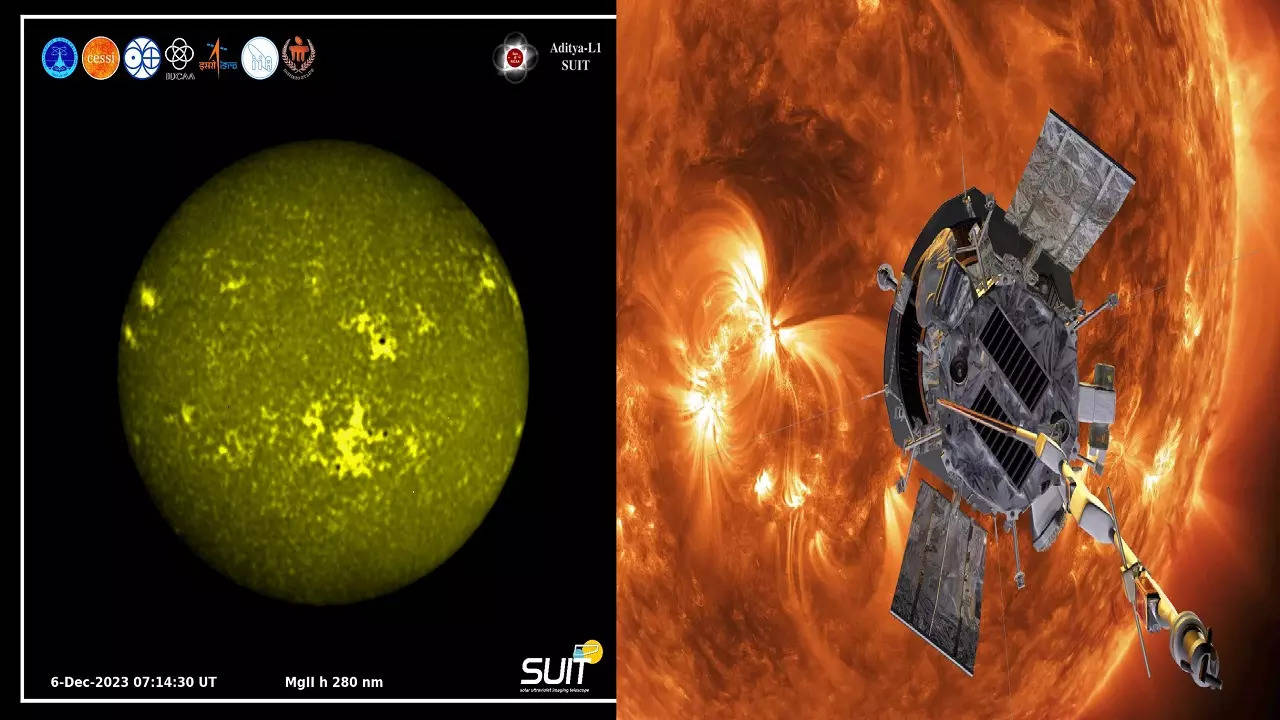ISRO’s Aditya-L1 mission has unveiled captivating images of the Sun, captured by the Solar Ultraviolet Imaging Telescope (SUIT), showcasing groundbreaking achievements in solar observation. SUIT employs technology surpassing that of traditional professional cameras, utilizing principles akin to space telescopes designed for capturing celestial marvels light-years away.
In a remarkable feat, the instrument revealed the Sun’s intricate dance within the 200-400 nanometre ultraviolet wavelength range, providing unprecedented insights into our star’s dynamic activities. This accomplishment goes beyond conventional photography, employing advanced technology comparable to space telescopes that explore distant celestial phenomena.
The Aditya-L1 spacecraft, dedicated to studying the Sun’s outer atmosphere, recently presented its inaugural images captured by SUIT. Among the seven instruments aboard the spacecraft, SUIT stands out for its remarkable ability to observe the Sun in its full glory. A video accompanying this achievement illustrates the spacecraft, adorned in golden thermal insulation, floating in the expansive reaches of space. The sequence unfolds as SUIT’s shutter gracefully opens, allowing sunlight to flood across various wavelengths. The shutter then concludes its dance, sealing off further light from the Sun, completing the image-capturing process.

ISRO confirmed that SUIT captured its first photo on December 6, utilizing 11 distinct filters to unveil 11 unique renditions of the Sun. These images provide detailed insights into the Sun’s photosphere and chromosphere, revealing features such as sunspots, luminous plages, serene solar regions, and ethereal plasma filaments.
Highlighting the significance of SUIT’s observations, ISRO emphasized their crucial role in unraveling the dynamic interplay between the magnetized solar atmosphere and its profound implications for Earth’s climate. The agency stated, “SUIT observations will help scientists study the dynamic coupling of the magnetized solar atmosphere and assist them in placing tight constraints on the effects of solar radiation on Earth’s climate.”
Launched on September 2 by ISRO, the Aditya L1 mission represents India’s pioneering venture into solar exploration. Positioned in a halo orbit around Lagrange point 1 (L1) of the Sun-Earth system, approximately 1.5 million kilometers from Earth, the spacecraft provides an unparalleled advantage with an uninterrupted view of the Sun. This unique vantage point enables real-time monitoring of solar activities, promising invaluable insights into space weather dynamics. The mission marks a significant leap in solar research, underscoring its profound impact on enhancing our understanding of the Sun’s enigmatic nature.
Aditya L1’s capabilities offer a gateway to unraveling the mysteries of the Sun and its influence on space weather. The continuous monitoring from its strategic orbit allows scientists to gain unprecedented knowledge about solar phenomena, contributing to advancements in space science and our comprehension of the intricate processes governing our solar system. As technology and space exploration evolve, Aditya L1 and its SUIT instrument stand at the forefront of unraveling the Sun’s secrets, opening new frontiers in solar research.



